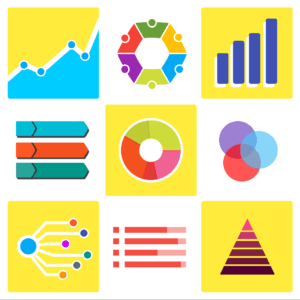From Consoles to Convenience
Technology innovations and the lens through insights have shaped the gaming category and the way games are developed, played and experienced. As with many AI developments, the pace has only accelerated as virtual reality, immersive experiences and cloud-based gaming has grown in importance.
As cloud service Ingenuity notes in its blog, “Leveling Up: How Tech Adoption is Transforming the Gaming Industry,” there has been a constant cycle of innovation and new product development derived from consumer insights.
Ingenuity relates, “The constant cycle of innovation, where one breakthrough in hardware or game engines is swiftly followed by the next, fuels a culture of progress and reinvention. From faster processors to new display technologies, the pace of advancement is relentless. On top of that, gamers themselves are driving demand. As expectations for realism and interactivity grow, so does the need for advancements in areas like AI, VR, AR, and next-gen graphics. In today’s market, success isn’t defined by simply releasing a game, it’s about transforming how players experience it.”
Understanding where the category is heading is important in terms of gaining consumer insights and feedback, preferences from the gamer community, developing stakeholder engagement, strategic planning and investment. Ingenuity notes that the most pressing trends include:
- Cloud Gaming: Cloud gaming, also known as game streaming, is shaking up how interactive content is being delivered and consumed. Rather than executing titles locally, games are streamed in real-time from remote servers, eliminating the need for high-end hardware or lengthy downloads. This shift breaks down traditional barriers, making gaming more accessible across a wide range of devices, including smartphones, tablets, and smart TVs.
- Artificial Intelligence & Machine Learning: Artificial intelligence and machine learning are transforming how games are both built and experienced.For developers, they are becoming core tools for automation, optimization and personalization at scale.AI-powered systems now enable predictive analytics for player behavior, automated QA testing and dynamic game balancing in real time. The capabilities reduce manual overhead, accelerate iteration cycles and allow teams to focus on high-impact creative and engineering work.
- XR Technologies: Virtual reality (VR), augmented reality (AR), and mixed reality (MR) are pushing the boundaries of interactive game development, enabling deeply immersive and context-aware experiences. These technologies give developers new ways for players to interact with games like using hand movements, recognizing the physical environment, or responding to real-world sensors. This requires developers to think beyond traditional screen-based design and build for more dynamic, immersive experiences.
- Blockchain and NFTs: Blockchain technology is introducing a programmable, decentralized infrastructure for game developers to redefine ownership, monetization and player engagement. This system supports digital assets like NFTs (non-fungible tokens), where developers can create verifiable digital ownership of in-game items, enabling cross-platform interoperability, secondary markets and new revenue streams.
- Haptics and Motion Tracking: Haptic feedback and motion tracking are enabling developers to design gameplay that engages the body as much as the screen. Advanced haptic systems simulate sensations such as tension, texture, and impact, making in-game actions feel real.By simulating tactile feedback and tracking full-body motion, developers can create experiences that are both immersive and accessible, appealing to broader audiences and opening doors to innovative gameplay.
Leveling Up Your Game
During FEI25, Jonathan Stringfield, VP, Global Revenue & Business Planning at Microsoft, and the author of “Get in the Game: How to Level Up Your Business with Gaming, Esports, and Emerging Technologies,” held a session on “Using Innovation as a Differentiator.”
The session investigated how harnessing emerging technology and understanding audience behavior can revolutionize your business. It also explored the paradox that old models often need innovation, engagement and new experiences, but what’s new is often old. Ultimately, Stringfield explores how video games provide a cognitive framework for understanding AI innovation and human-technology relationships. He also demonstrates how gaming has historically helped contextualize new technologies by creating emotional connections and meeting human needs for socialization.
The Growth Potential of Gaming
The gaming category is not just simply focused on introducing a new video game, but rather the development of the entire user and gaming experience that also surrounds it. In many ways, the video game industry is at the forefront of technological adoption and innovation, bringing with it rich, interactive experiences that also filter down to other tech, cultural and lifestyle developments as insights are derived from a diverse range of gamer communities and demographics.
“Emerging technologies are transforming how games are built, played, and monetized. Embracing these innovations is essential for developers and stakeholders to create unique experiences and remain competitive in the evolving gaming industry,” advises Ingenuity.
Video: “Using Innovation as a Differentiator,” featuring Jonathan Stringfield, VP, Global Revenue & Business Planning at Microsoft, courtesy of FEI25.
Contributor
-

Matthew Kramer is the Digital Editor for All Things Insights & All Things Innovation. He has over 20 years of experience working in publishing and media companies, on a variety of business-to-business publications, websites and trade shows.
View all posts














































































































































